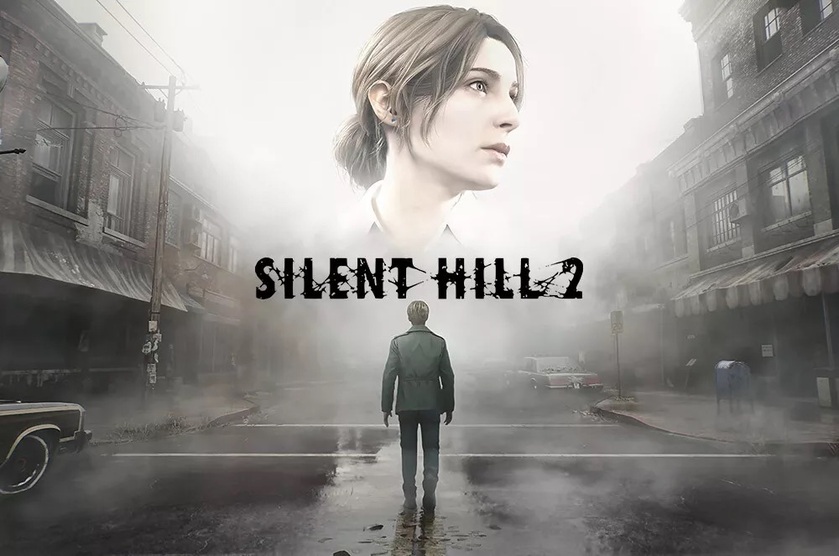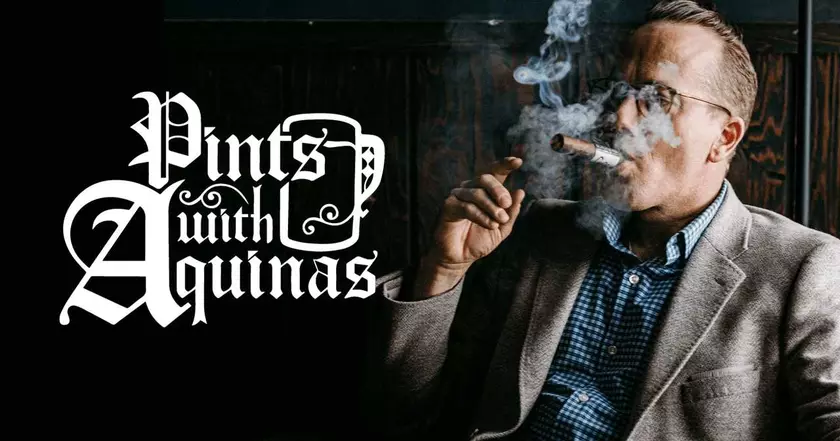Pop-Cultured Catholic #15: “Silent Hill 2” and a Soul’s Journey Through Despair, Repentance, and Forgiveness
With me writing my third Halloween-themed posts for October and this month also seeing the release of a certain video game remake, I have decided to dissect Konami’s acclaimed Survival Horror game, “Silent Hill 2”. Ever since its release in 2001, the game has been widely praised for its atmosphere, symbolism, and ability to tackle heavy subject matter, making it a go-to example for video games to be considered art. While I do not have a gaming system to play the remake on, I did manage to get my hands on the original and play through it many years ago. Its story resonated with me, featuring themes of empathy, grace, forgiveness, and redemption to counterbalance its topics of depression, trauma, abuse, guilt, and sorrow.
Before I tell the story of James Sunderland’s journey in “Silent Hill 2”, I will first give a basic rundown of the franchise’s overall premise. The Silent Hill video games center around a fog-smothered town in rural Maine. Over the course of many centuries, a dangerous witchcraft cult called The Order has turned the titular town of Silent Hill into a cursed place, where the spiritual realms of Purgatory and Hell can become one with the physical world. Due to this, some people visiting Silent Hill end up journeying through a nightmarish mirror of the town, akin to Dante’s Inferno. The imagery of Silent Hill draws inspiration from the 1990 psychological drama “Jacob’s Ladder”, and characters often face monsters tailor-made to symbolize their sins, traumas, etc. With these being Survival Horror video games, players are often tasked with exploration, puzzle-solving, fighting or fleeing monsters, utilizing an inventory of weapons and tools, plus managing limited resources like medicinal items and firearm ammunition. Players can also influence the unfolding story, based on how they play the game and the choices they have their character(s) make.
James Sunderland is a depressed widower who is reeling from the death of his terminally ill wife named Mary, then seemingly gets a letter from her beyond the grave, beckoning him to Silent Hill. Having previously visited the town with Mary as a vacation spot and wanting final closure, James drives to Silent Hill alone on a foggy day. But upon leaving his car to venture through a park trail on foot, he arrives to discover that the “town” looks completely vacant… and the way back has mysteriously closed. He is soon set upon by paranormal monsters, most of which bear feminine appearances evoking the memories of Mary’s final years in the hospital. James Sunderland must now explore the town‘s hellish counterpart to learn what is happening, fight his way through the monsters, help the few other people he comes across, and get his closure with Mary.
There are three other people, whose journeys lead them to enter Silent Hill and repeatedly cross paths with James:
1.) Laura, the Runaway Orphan Girl — This eight-year-old girl has run away from an unspecified orphanage and traveled alone to Silent Hill for currently unknown reasons. She at first behaves very mischievous and bratty towards people, once even unwittingly locking James in a room with a monster. But she is more innocent and naive than she appears, being unable to see the monsters or be harmed by them. She also turns out to have met Mary before.
2.) Angela, the Traumatized Young Woman Who Fears Men — Even before walking into Silent Hill, James meets Angela on the trail. She is emotionally damaged and paranoid towards him, though he tries to help and empathize with her. As the narrative unfolds, James learns that Angela suffered horrific abuse since childhood, eventually fighting back and killing at least one of her abusers. However, due to gaslighting she also faced, Angela blames herself for her victimization, wrongly feels guilt for her act of self-defense, and is contemplating suicide. Though unable to truly rehabilitate Angela, James does his best to emotionally support her and defend her from the torments Silent Hill uniquely inflicts on her.
3.) Eddie, the Bully Victim With a Dark Side — Struggling with his weight, appearance, and awkward personality, Eddie has been subjected to lots of mistreatment from everyone around him. He too eventually retaliates. But unlike Angela, he goes way too far in doing so and slowly loses all scruples. Beneath his timid demeanor, he has nurtured a hair-trigger temper… which James learns the hard way.
Among the many manifestations of Silent Hill’s demonic power, two of them play a more prominent role in James’ story and become characters in themselves:
1.) Pyramid Head, the Executioner of Silent Hill — Early on, James is confronted by one monster that is seemingly unkillable, an executioner bearing this massive, triangular, cumbersome, rust-colored, and painful-looking helmet. Pyramid Head repeatedly stalks, toys with, and tries to kill James, similarly to Death hunting the titular hero in “Puss in Boots: The Last Wish”. Suspiciously, Pyramid Head’s humanoid body underneath his helmet and clothes looks similar to James’ own in size and build, potentially foreshadowing something.
2.) Maria, the Mysterious Doppelgänger of Mary — At first, James appeared to have met a fourth person named Maria, whose appearance uncannily resembles Mary. Maria not only seems to help James and give him much needed company, but also exhibits the attractiveness and allure he has envisioned Mary having in her prime. However, it soon becomes clear that she is not a normal person, but perhaps another machination of the town. James defends her from the attacking monsters, only to witness Pyramid Head “killing” her before his eyes… only to later see her inexplicably alive and well. This cycle occurs more than once. And throughout it all, James forms a conflicted attachment to Maria, which she encourages.
Our first major hint of the story’s plot twist comes, during James’ final interaction with Eddie. When James meets Eddie again in a meat locker room, he sees more signs of the town enticing Eddie into further madness. Eddie becomes willing to sadistically kill anyone who he perceives has wronged him, and James accidentally sets him off while trying to deescalate his anger. The two of them fight and James kills Eddie in self-defense. Despite his justifying circumstances, James is nonetheless horrified by the fact that he killed another human… which feels all too familiar. Afterwards, Silent Hill spawns a duplicate of Pyramid Head, so two copies of him are now coming after James.
Near the end, when James reaches a lakeside hotel where he and Mary once visited, he receives more clues and reminders of what happened leading up to Mary’s death. As Mary’s terminal illness progressed, James’ relationship with her deteriorated. Mentally compromised, Mary continuously rejected James’ attempts at consolation, replying with verbal and emotional abuse. In her mood swings, Mary even declared that she wants the doctors to just kill her, only regaining her lucidity after James would leave the hospital in defeat. The lucid Mary would sorrowfully plead for James to come back and that she wants to keep holding on for as long as she can… words which James would not hear until his walk through the haunted hotel. To make matters worse, James’ longing to feel emotional and physical intimacy again became a struggle against adulterous thoughts, which the town’s forces have also sought to exploit.
In the hotel, James plays a haunted videotape left for him, showing the truth of Mary’s death and his inner demons: James smothered his terminally ill wife and has repressed the memories of his sin, yet harbored a deep-seeded desire to punish himself through suicide, giving form to Pyramid Head. In essence, James’ whole ordeal in Silent Hill is the equivalent to that subplot in Mel Gibson’s “The Passion of the Christ”, where Judas has betrayed Jesus and demons chase him into the desert, attempting to make him die in despair. Besides a misguided desire to put Mary out of her misery, James also harbored a selfish desire for Mary to be out of his life sooner. He seized on that impulse and immediately regretted it. The town has spawned Pyramid Head as an executioner made in the image of James himself, wearing that helmet to embody the crushing weight of his guilt. James’ self-hatred has empowered Pyramid Head into an unstoppable force. As a second-pronged attack, the town is also tempting him to replace Mary with a false fantasy relationship, in the form of Maria.
For the penultimate battle, James has a last confrontation with Pyramid Head, now as a repentant man seeking to face his guilt, rather than running from his guilt or crushing himself under it. By now, James’ wish that he could help Laura and Angela has made him more selfless and wanting to value his own life. James sees that his prior unwillingness to properly repent and turn away from suicide has especially impeded his ability to dissuade Angela from distrusting men and seeing death as her only escape. But with newfound resolve, he is ready to fight the two copies of Pyramid Head. The player controlling James has to keep him alive for a set amount of time, which shortens whenever James lands a hit or shot on one of them. Once James overcomes his struggle against despair, externalized by this fight, Pyramid Head finally loses power over him and both copies of the weakened monster skewer themselves.
Among the many possible endings players can get (including two additional ones unique to the remake), the most ideal ending is the one titled “Leave”. After defeating Pyramid Head, the town has one more obstacle left for James, the doppelgänger Maria. Maria makes herself look even more like Mary and tries one last time to make James embrace her as a replacement. James solemnly states that she is not real and he cannot do this. In retaliation, Maria takes on a demonic form and attacks James. This is the game’s final battle. After vanquishing the transformed Maria, James suddenly finds himself in a bedroom… with Mary waiting to speak with him. James profusely apologizes, taking full responsibility for what he did to her and making no excuses. Whether this is Mary’s ghost, another projection of Silent Hill, or entirely his imagination, the vision of Mary forgives James. With James’ repentance and reconciliation, he is freed from Silent Hill and ready to face the real world, finally reading Mary's real last letter to him. He will do whatever he can to atone and turn his life around, while letting forgiveness do the rest. It is left ambiguous how he goes about making reparations in the real world. But we see that he will look after the orphan girl Laura for the time being, until she has a home again.
The way James behaves in the “Leave” ending is most consistent with the way Christ calls us to repentance. When the resurrected Jesus appeared before the disciples, he both showed them his wounds and declared “Shalom”. Bishop Barron has considered them both equally vital, reminding us that humanity killed God (who coincidentally compares his covenant to a spousal relationship) yet our sins are forgiven. During the sacrament of reconciliation, we acknowledge our wrongdoing, state our resolve to work towards sinning no more, and accept our reliance on God’s grace wherever we cannot make the necessary reparations on our own. Saint Peter denied Jesus three times and regretted it, while also taking responsibility, repenting, and accepting God’s forgiveness. Saint Paul also went from killing Christians to accepting God’s future for him as a redeemed man. Likewise, James shows he can still do some good with the time he has, like keeping Laura company so she is not alone.
This particularly contrasts with the game’s “In Water” ending, reminiscent of Judas Iscariot’s fate. Judas betrayed Jesus and regretted it, but he was so consumed by despair that he took his own life. This is similar to the game’s “In Water” ending, where James leaves Silent Hill and is about to be free of the town’s torment, only to relapse into despair and drive his car into the lake. In still wanting to punish himself, James does not make anything better and is not even there to watch over Laura, who is now wandering around alone. However, even when people in mortal sin make that choice, we can still hope and pray for God’s intercession. Closure and reconciliation can occur within that final moment when they appear to be dead… reminding me of the “Jacob’s Ladder” movie which inspired Silent Hill.
This video game’s story also showcases the double-edged sword that guilt can be. On one hand, the abandonment of guilt leads Eddie further down his dark path. And James needed to stop running from his sense of guilt to feel righteous conviction and repent of his sin against Mary. At the same time, when that guilt is not properly ordered by a love of oneself, a desire to heal the broken bonds, an appreciation of mercy, and a proper understanding of what is right or wrong in the first place, guilt can become twisted into self-destruction. James’ struggle with Pyramid Head embodies when regret turns to despair. And Angela is most tragic, being a completely innocent victim who has guilt weaponized against her. Her indoctrinated self-blaming and hopelessness keep her locked in abuse. Her story is also a prime example portrayed in fiction of how people who consider death as a relief are often not in their right minds… especially not in a manner for the act to constitute mortal sin. When one is struggling with a sin, whether it be past or ongoing and real or imagined, they must be mindful of these pitfalls to avoid.
To end this post with some comic relief, after one completes their first playthrough, other endings are made available to get, including one unique joke ending with a cute dog. If players locate a dog house and collect a key which appears there, during subsequent playthroughs, they can unlock a door at the hotel. James walks through it to find a high-tech control room, manned by a headphones-wearing puppy who has been the mastermind all along. Cut to a silly version of the credits. I am linking that joke ending here.
For the supplementary materials, here is a clip of James’ final confrontations with Pyramid Head and Maria, the “Leave” ending, the jokey “Dog” ending, and "Theme of Laura"…
1.) Final Pyramid Head Fight (Remake):
https://m.youtube.com/watch?v=-tw4bwRtfg8
2.) Fight Against Maria (Remake):
https://m.youtube.com/watch?v=UoCq8JwgFyA
3.) “Leave” Ending (Original):
https://m.youtube.com/watch?v=Qfuqquil9vg
4.) “Dog” Ending (Original):
https://m.youtube.com/watch?v=aM7IdCa6NNo
5.) "Theme of Laura" Full Soundtrack:
https://www.youtube.com/watch?v=-Kh9FDOoSeM





























